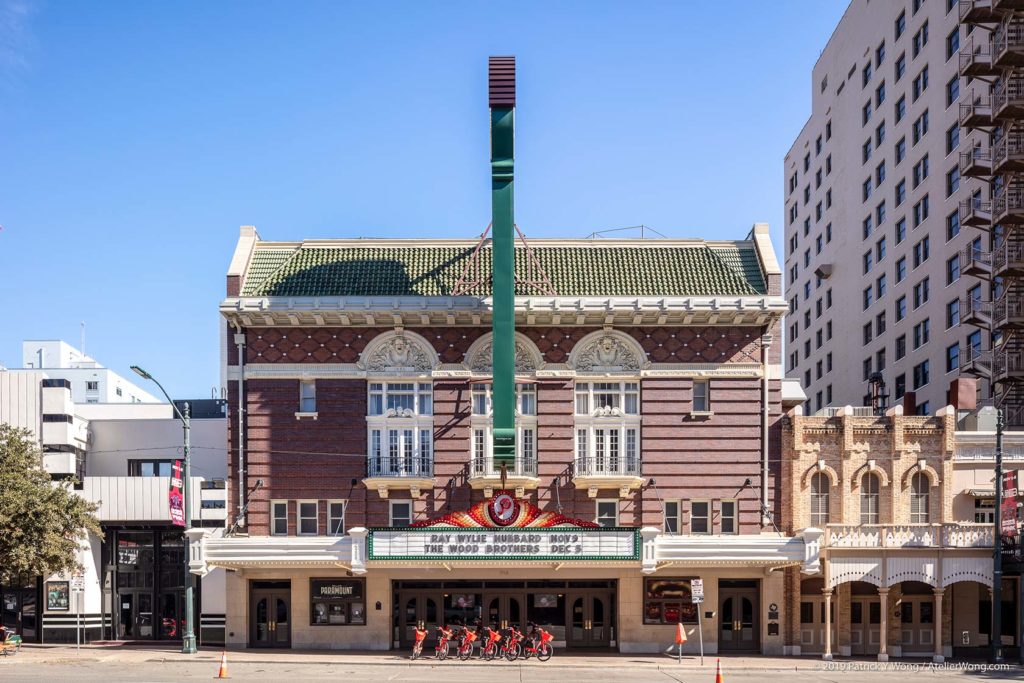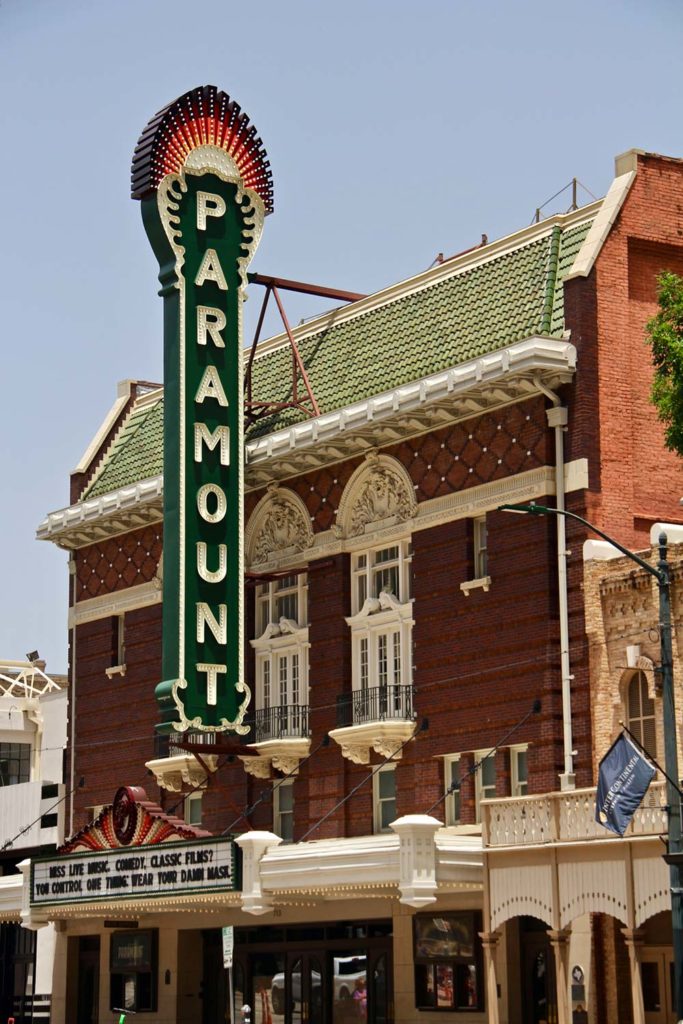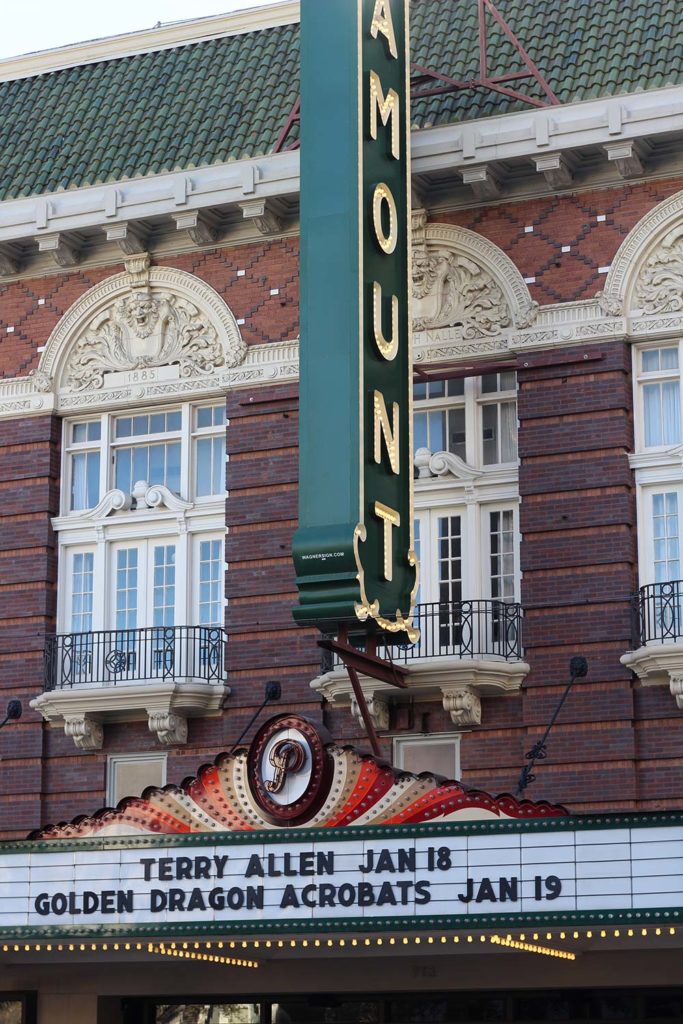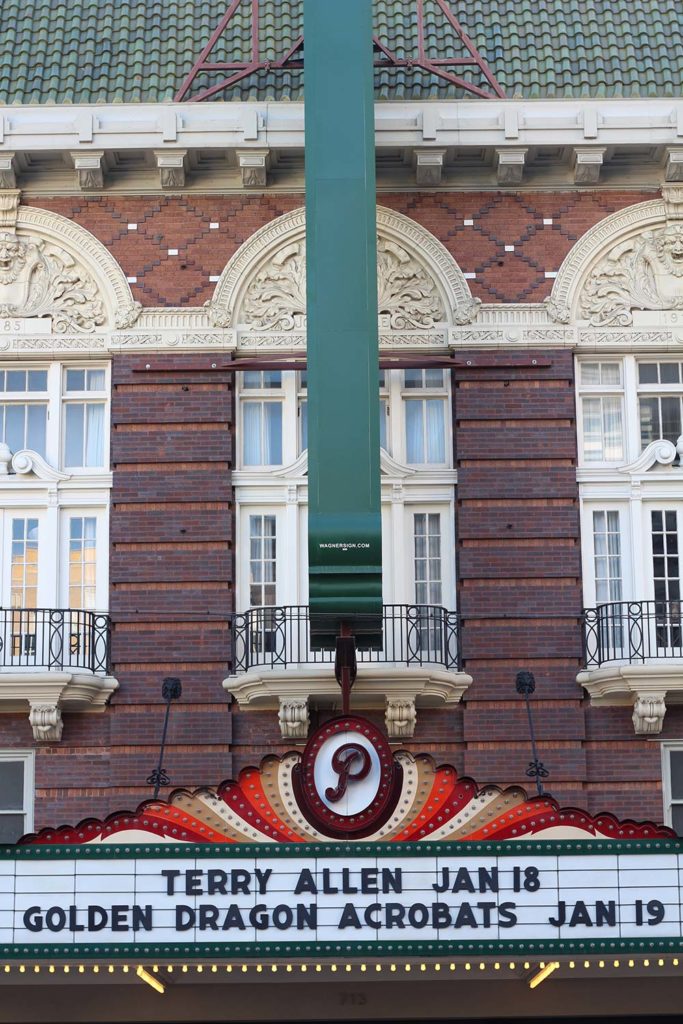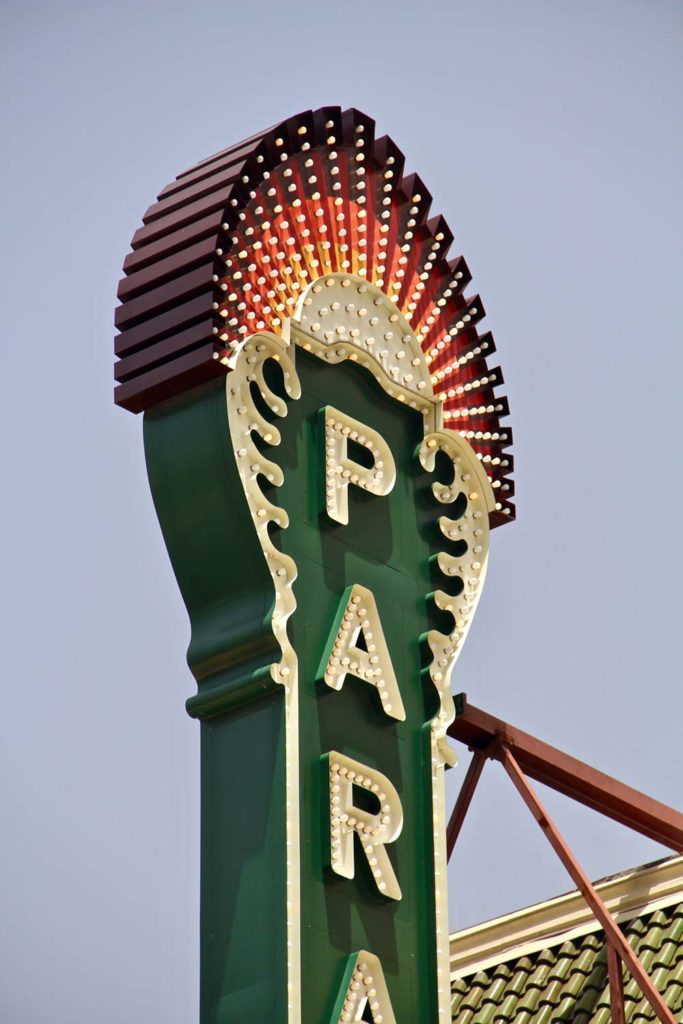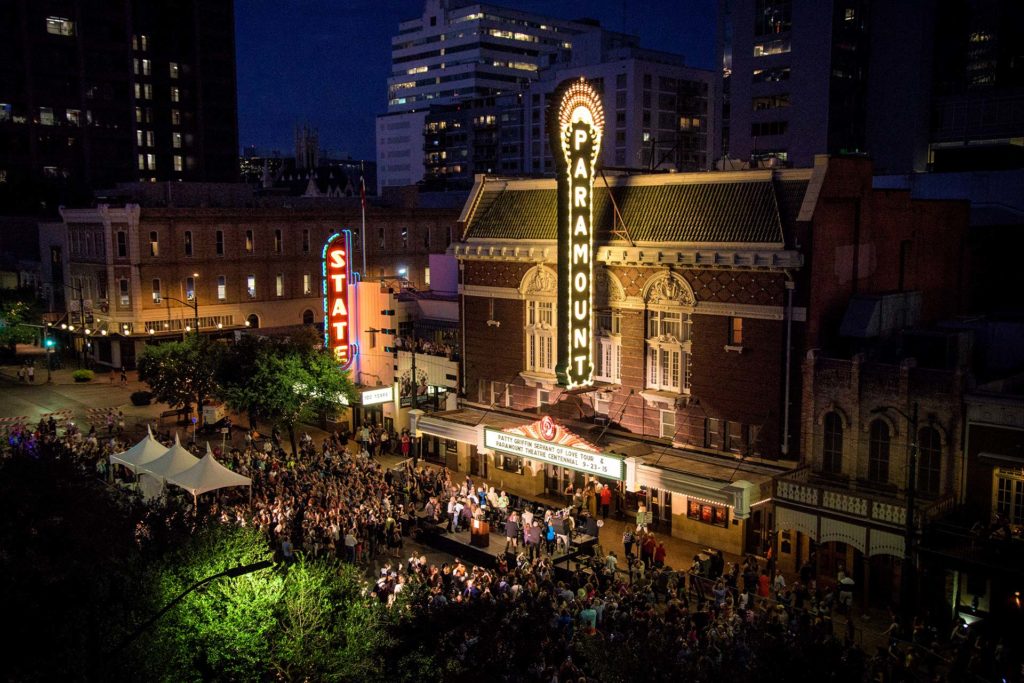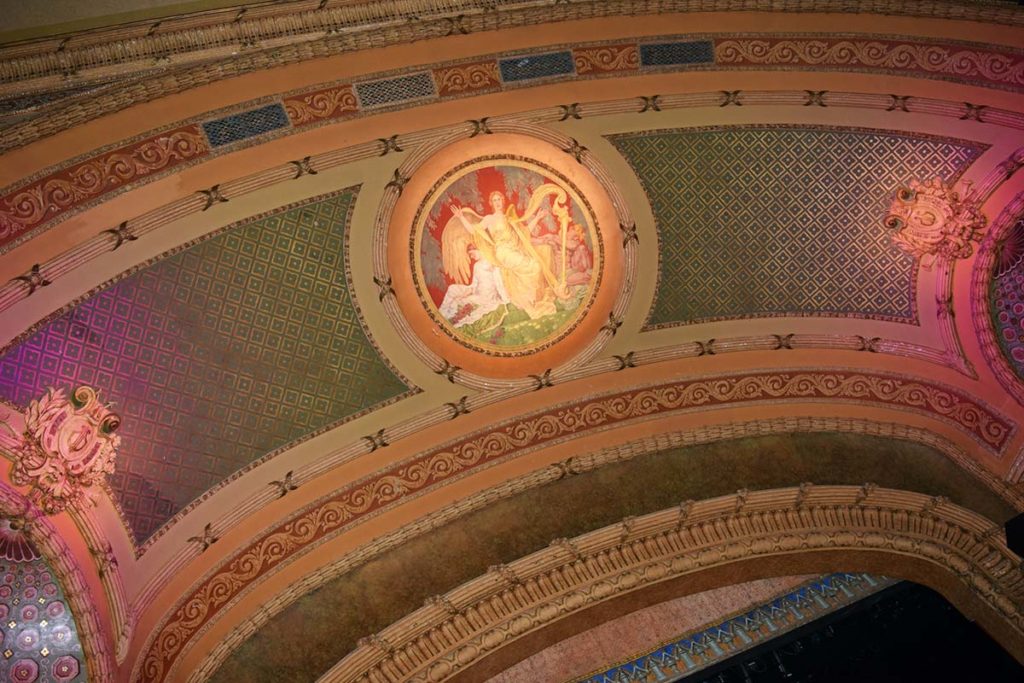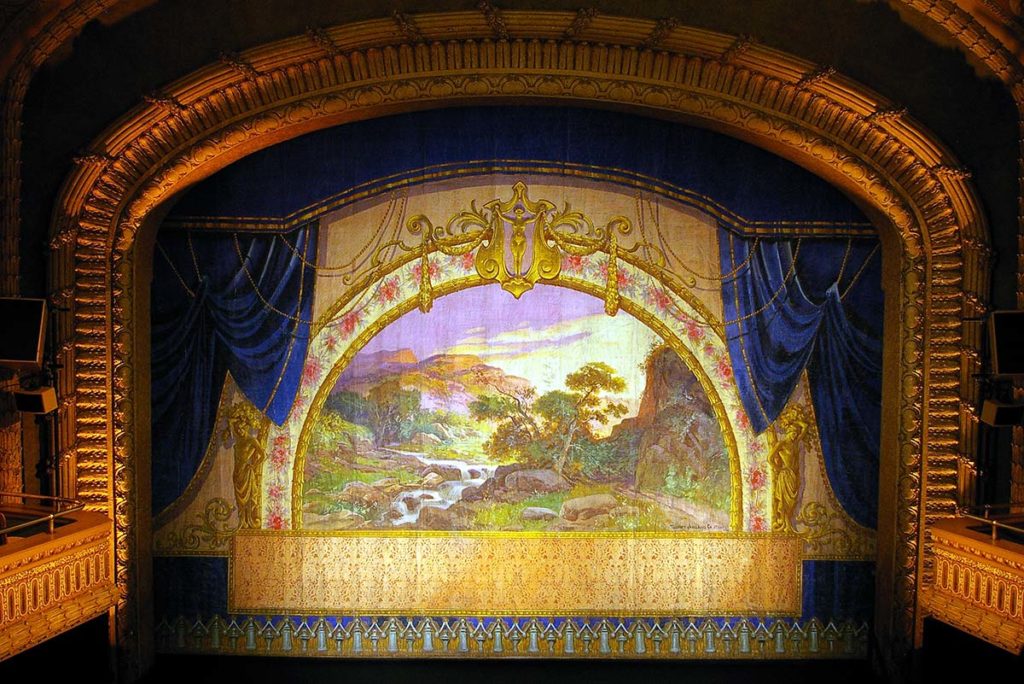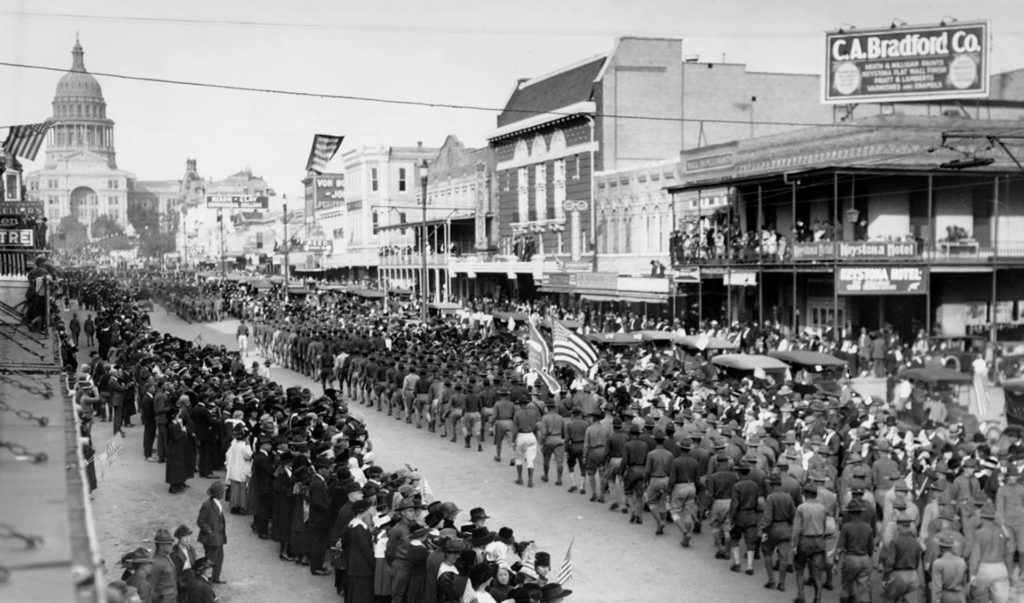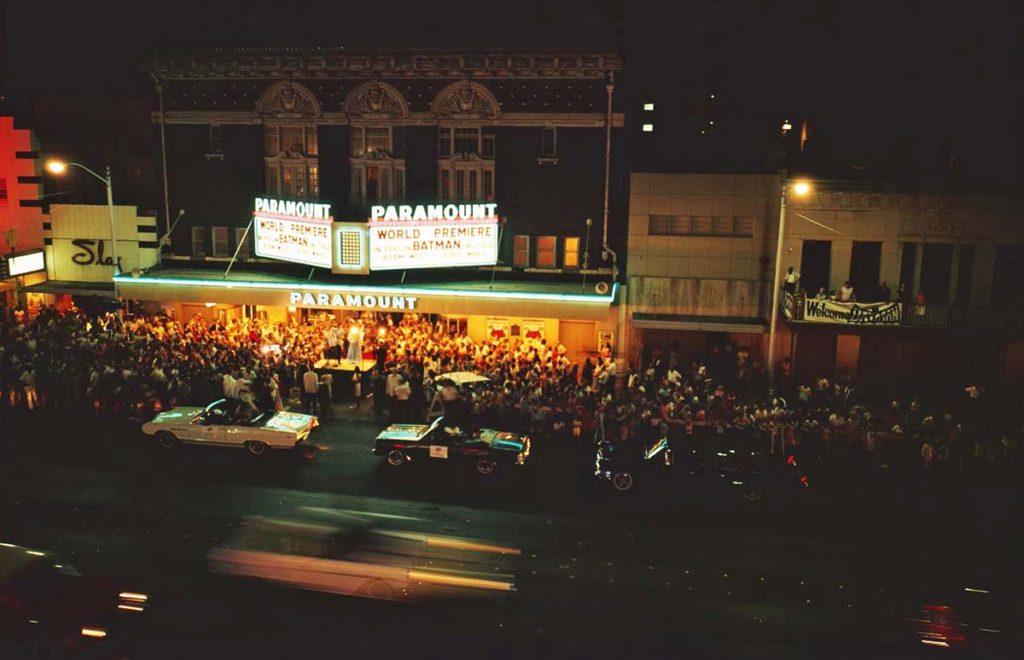“She will forever be shimmering to play with the imagination of what a bygone era was really like but would be alive, in the present and future, to the enrichment of all who grace her presence.” – John Bernardoni
The legacy of the Paramount Theatre is that of ordinary citizens coming together to save a beloved landmark. When this legendary performing arts venue opened as “The Majestic” in 1915, downtown was abuzz with activity. But as Austinites flocked to the suburbs in the mid-20th century, the Paramount gradually declined until it was slated for demolition to make way for a Holiday Inn. It took the dedication and vision of a handful of scrappy citizens to pull its illuminated edifice back from the brink of destruction.
Austin entrepreneur Ernest Nalle built the theater on land his family had owned since 1885. Dedicated to his father, Joseph Nalle, the theatre encompasses 500,000 cubic feet and seats 1,200 people on two levels. The Neoclassical design came from Chicago architect John Eberson, who built around 1,200 theatres in his lifetime (the Paramount is one of only 25 that remain). Below its green-tiled parapet, the west façade features three large windows capped by carved limestone arches and set within rusticated bands of russet brick. The colorful, 47-foot-tall illuminated “blade”, which mysteriously vanished in 1963, was replaced in 2015 to mark the Paramount’s centennial. A freestanding ticket booth used to sit below the marquee.
For the 32,000 people in the fledgling capital, this became the premiere destination for vaudeville, magic, and burlesque shows from the likes of the Marx Brothers, Harry Houdini, and Sarah Bernhardt. The polychrome auditorium is characterized by its large proscenium arch featuring a mural of St. Cecilia (patron saint of musicians), lavish opera boxes, ornate chandeliers, and resplendent curtain featuring a pastoral scene framed by blue drapery (for a thrilling account of the curtain’s discovery, visit this site).
Renovated in 1930 to lure back audiences after the Great Depression, the venue reopened as “The Paramount” and entered its Golden Age with a program focused on movies and live theater. Following the rise of television and suburban life in the 1950s, Austin’s “grande dame” was downgraded to a B-movie house, and attendance plummeted. But when plans were announced for the theater’s demolition, three Austinites—John Bernardoni, Charles Eckerman and Stephen Scott—vowed to save the theatre. Without money or influence, the trio ran classic films to keep the lights on while building a small coalition for the theatre’s revival, culminating in the building’s listing on the National Register of Historic Places and a national grant that funded a comprehensive restoration. Since then, the venue has reclaimed its role as standard-bearer for the Austin arts scene, with more than 250 events and 100 screenings attended by 200,000 people each year. – Bud Franck
